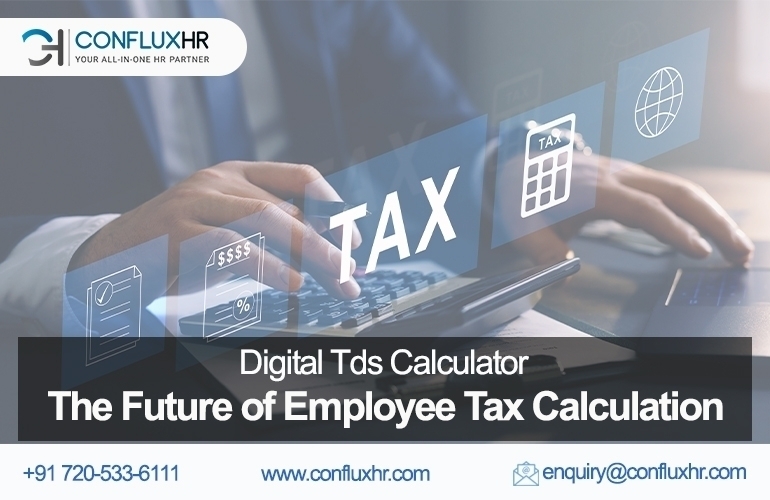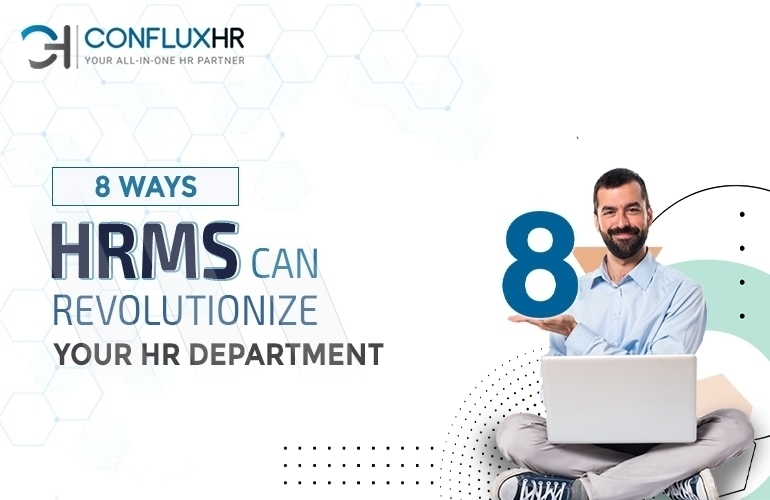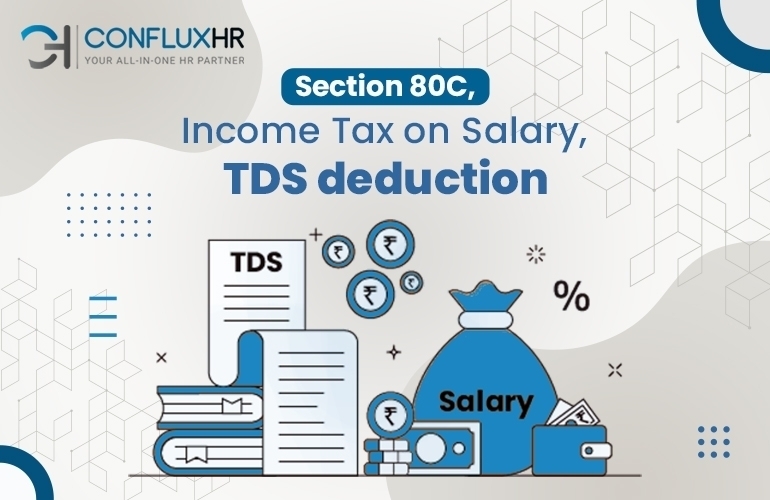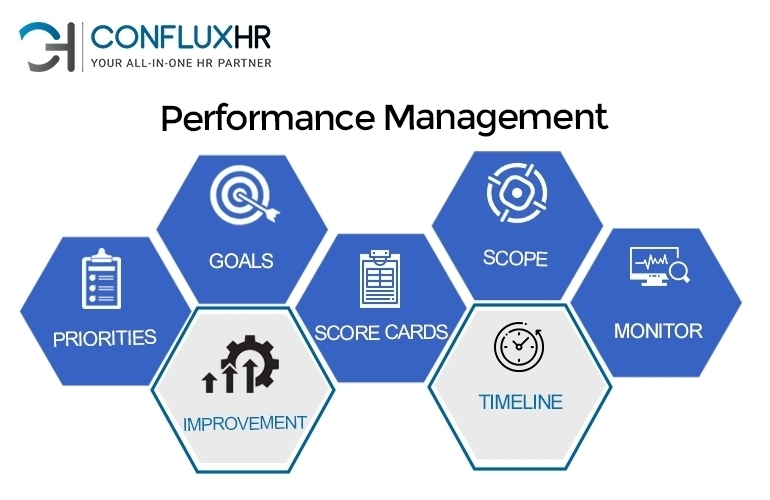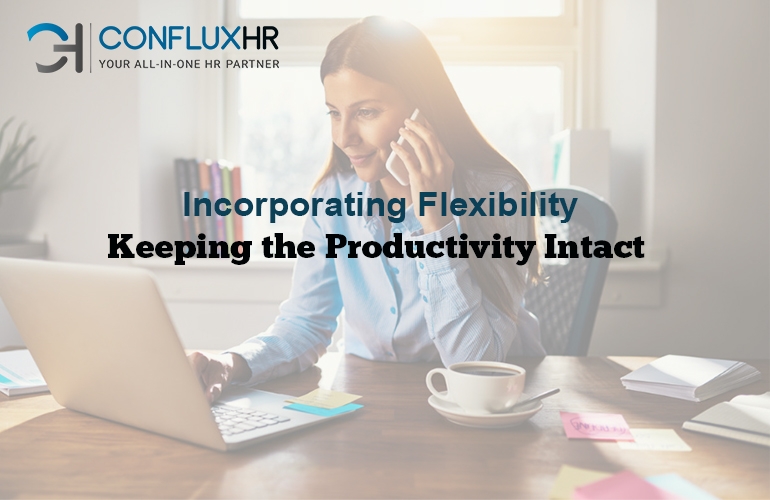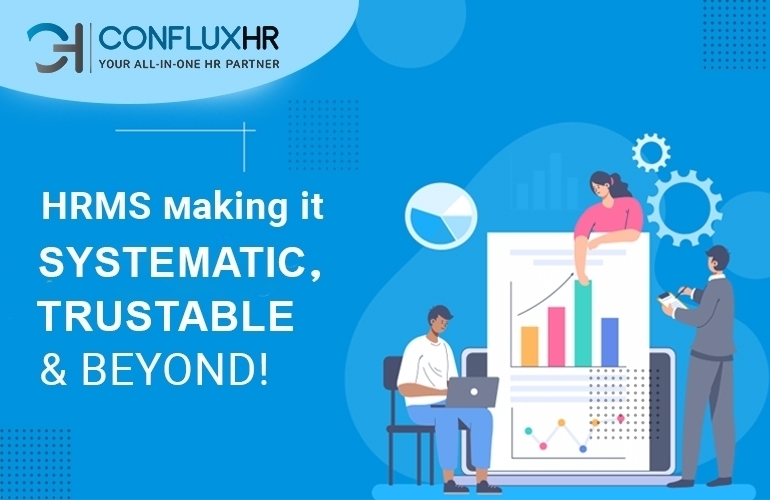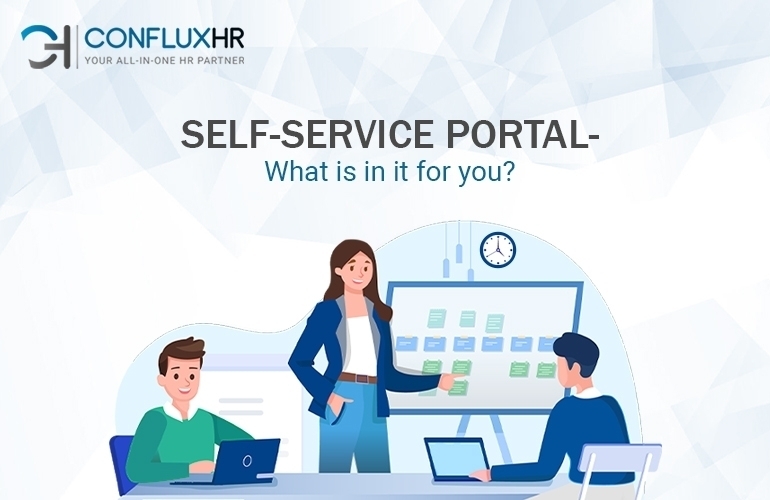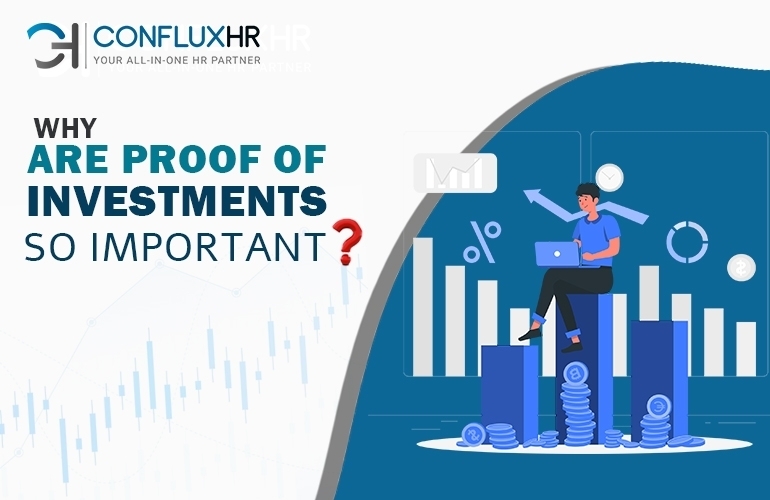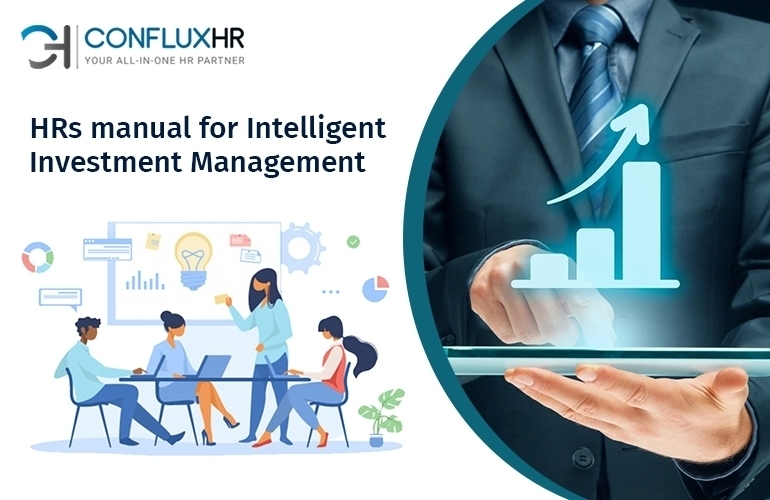Owning a business has its own set of difficulties. One of the most significant is income tax calculation and reporting. In this blog, we will look at why a Digital TDS calculator is the way of the future for corporate tax calculations.
Calculating taxes on staff income is as simple as using ConfluxHR’s automated income tax calculator. However, it is critical to understand the fundamentals of how employees are taxed in India. Let’s start with the fundamentals of corporate taxation.
India’s Taxation Rules for Employees
The Indian tax system can be complex, but the following information will provide a general overview of the key aspects that are relevant to employees.
Income Tax
In India, income tax is levied on an individual’s total income, which includes salaries, pensions, rent, and any other taxable income. The income tax rates beyond the financial year 2023 are as follows:
- Rs 0 to Rs 3 lakh – 0% tax rate.
- Rs 3 lakh to 6 lakh – 5%
- Rs 6 lakh to 9 lakh – 10%
- Rs 9 lakh to Rs 12 lakh – 15%
- Rs 12 lakh to Rs 15 lakh – 20%
- Above Rs 15 lakh – 30%
It is important to note that these rates are for individual taxpayers and may differ for different types of tax payers such as senior citizens and women taxpayers.
TDS (Tax Deducted at Source)
TDS is a tax that is deducted at the source of income, meaning it is deducted from an individual’s salary before it is credited to their bank account. Employers are required to deduct TDS from their employees’ salaries if their annual income exceeds the tax-free limit of INR 2,50,000.
Other Taxes
In addition to income tax, employees in India may also have to pay other taxes, such as:
Professional Tax: This is a state-level tax that is deducted from an employee’s salary and is payable by all individuals who are engaged in a profession or trade.
Provident Fund Tax: This is a tax on the contribution made to an employee’s provident fund account. The current tax rate is 12% of the contribution made.
With the ever-changing environment of tax laws and regulations, ensuring a fool-proof method of computing taxes is becoming increasingly important. Digital TDS calculator will be the future of employee tax calculation in 2023, offering various advantages over old techniques.
The Benefits of Using Digital TDS Calculators
Gone are the days when you had to submit your employee taxes separately each time. It was a complicated and time-consuming process that required documentation every time. On top of that, you had to work extra hard to keep your tax returns accurate.
ConfluxHR’s automated TDS calculator can help businesses simplify and expedite their TDS management processes while ensuring compliance with TDS requirements.
With the Digital TDS calculator becoming more popular, here are some important advantages of a income tax calculator to consider:
- Accurate and up-to-date calculations
- Time-saving
- Ease of use and accessibility
- Integration with other financial software
Experience The Future With Digital TDS Calculator By ConfluxHR
Traditional techniques of tax calculation are becoming obsolete as the world gets more computerized. Because of their ease of use, precision, and speed, digital calculators are currently the favored method for many enterprises.
These Digital TDS calculators are also gaining popularity and integration with existing accounting software, such as employee tax planning and compliance management. Finally, computerized calculators are the way of the future for corporate tax calculation.
They provide a variety of advantages, including precision, speed, ease of use, efficiency, adaptability, and cost savings.
The Way Forward
Once you start utilizing ConfluxHR’s Digital TDS Calculator, you will never go back to traditional tax computation and advanced tax calculation methods. You can calculate error-free taxes for each individual in the organization, remotely or in person.


